TURNING TO TURANDOT
In our previous installments in this series, we examined the question of inauthentic representations in the classic opera repertoire. We did so in three contexts: the title role in Carmen, whose Romani background greatly influenced the piece’s historical interpretation; The Snowy Day, whose composer and librettist actively sought to authentically represent a loving Black family on the operatic stage; and The Magic Flute character Monostatos, whose physical depictions and whose text itself have changed
since the 18th century to avoid racial stereotypes. The “Monostatos option” and the “Snowy Dayoption” are theoretical responses to the dilemma presented in Carmen, which is that some classic operas contain inauthentic representations of non-Western European people and cultures. They are two of many possible ways our artform can serve the widest cross-section of our community. If this artform speaks to the universality of human emotion, we should hope that this universality seeks to connect with truly all of us and, to be specific, to authentically represent BIPOC communities on the stage.
New works like The Snowy Day are a straightforward option, in which the creative team can select authentic stories depicting authentic representations. Monostatos is an interesting case study because his libretto and portrayal have been altered for long enough that it has become accepted practice. Our bookends to this series are more complicated case studies: the leading modern interpretation of Carmen has evolved from its original context, and now, though fully baked into the plot and the music, the title role’s ethnic minority is no longer considered a major influence on the events in the opera. And, finally, Turandot: an opera whose story has filtered through at least four different cultural lenses to depict a caricaturized China in the Italian commedia dell’arte tradition—this opera offers perhaps the most compelling case study of the season.
Turandot’s circuitous history starts in 12th-century Persia, in a part of present-day Azerbaijan. The poet Nizami Ganjavi wrote an epic quintet of poems called the Khamsa. One of the five epics, the Haft Peykar, contains seven tales as told to the Sasanian king
Bahram by his seven princess brides, and one of those tales is that of the Princess Turandokht, or Turandot. In the late 17th century, French scholar François Pétis de la Croix traveled throughout the Middle East, collecting many stories—and likely fabricating many others—in what would become his published collection Les mille et un jours (translated to One Thousand and One Days, which was inspired by, but different from, the more famous One Thousand and One Nights, or Arabian Nights). Then, in the late 18th century, Italian playwright Carlo Gozzi reinterpreted the tale he read in Les mille et un jours, imposing the sarcastic Italian commedia dell’arte tradition with characters such as Pantalone, Brigella, and Truffaldino rounding out the cast, and moving the
action to a fictional, imperial China.
But, wait—there’s more. German poet Friedrich Schiller, a friend of literary titan Johann Wolfgang von Goethe, translated Gozzi’s play into German, removing the commedia dell’arte and weaving a German Romanticism interpretation into the story. To put it one way without much nuance, Schiller took Gozzi’s sarcastic comedy and turned it into a humanist love story. Adding some complication to one’s interpretation of this piece, Puccini’s librettists Giuseppe Adami and Renato Simoni referenced both the Gozzi and the Schiller (more accurately, an Italian re-translation of Schiller’s German reinterpretation!) when working on the opera’s text.
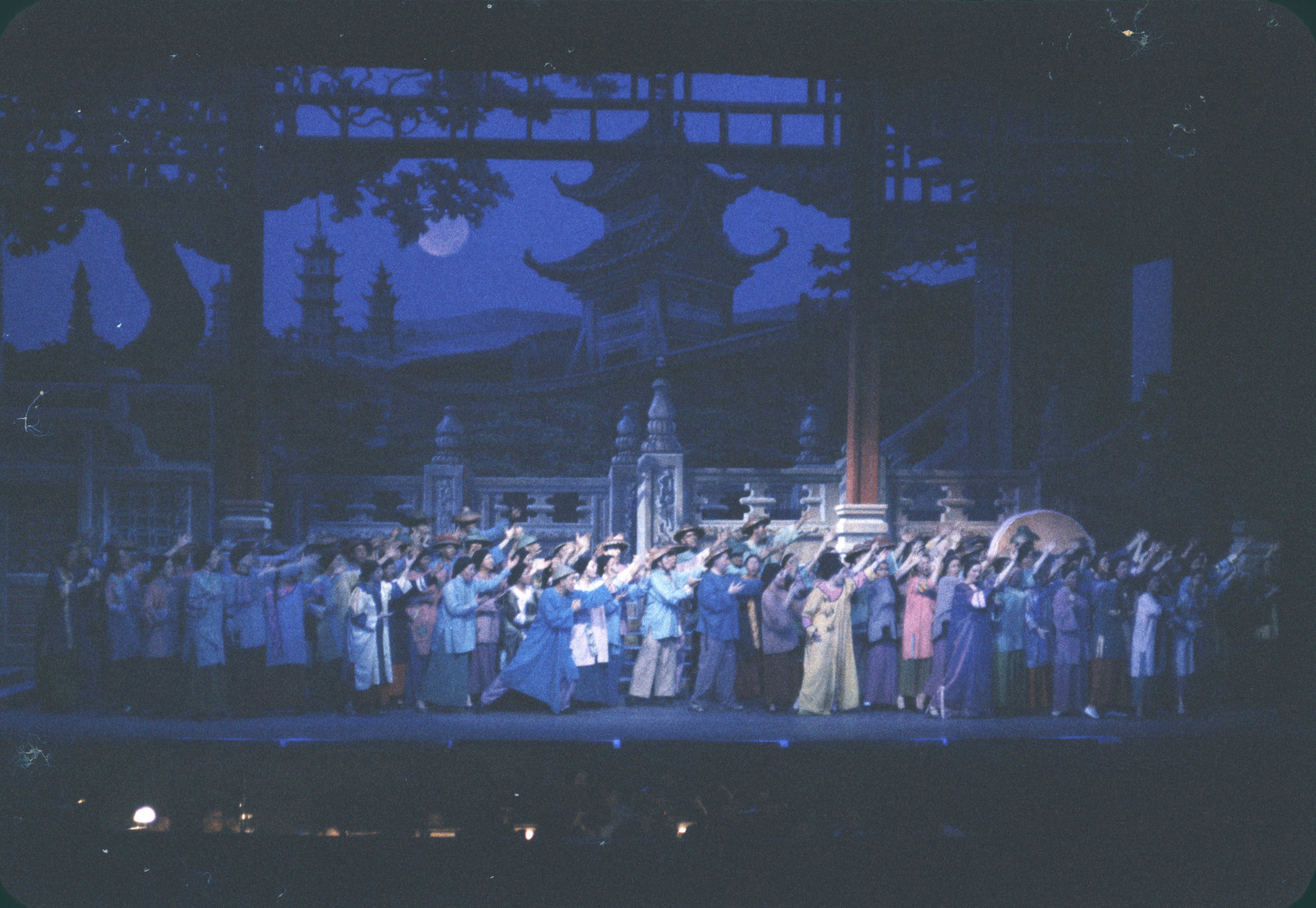
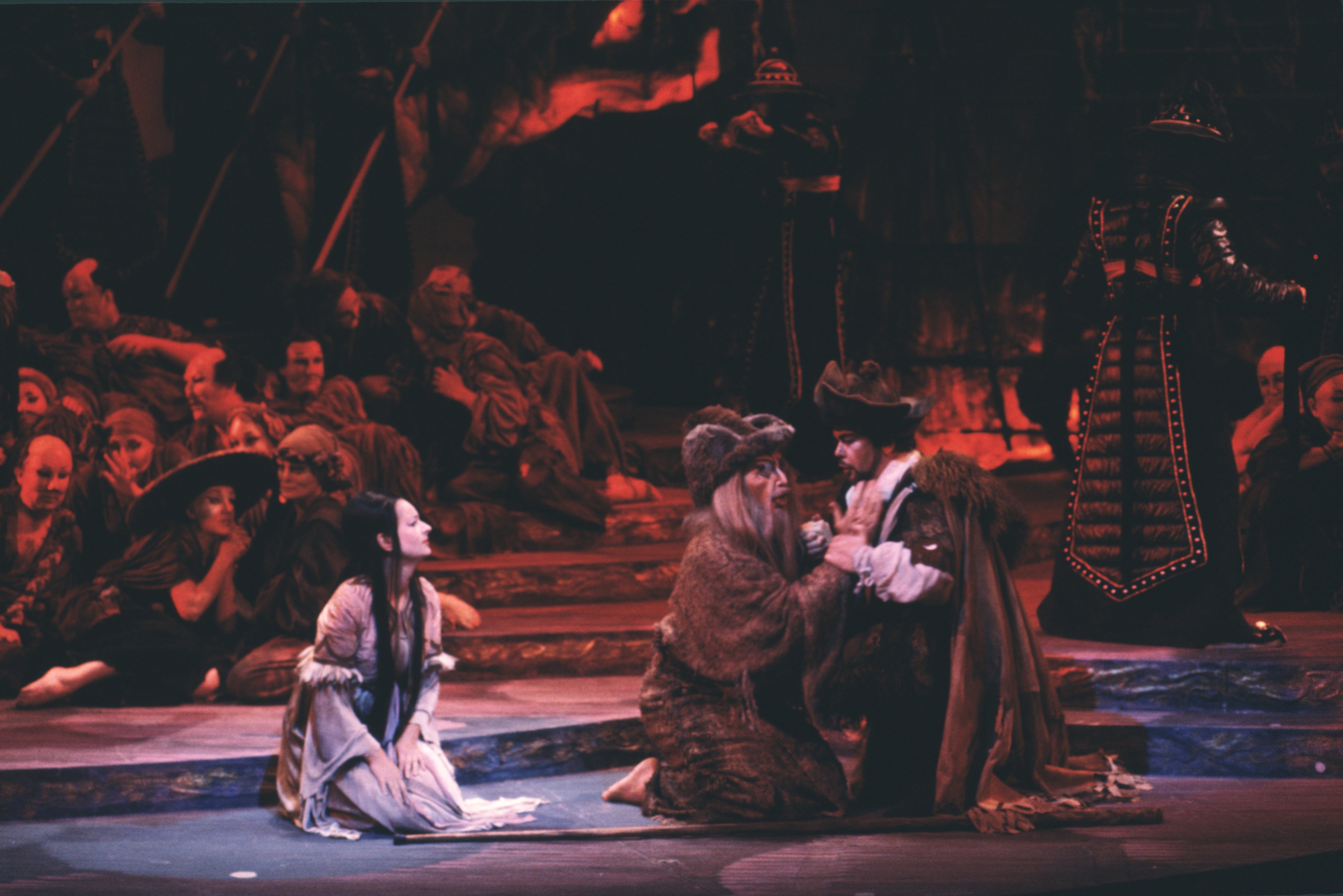
So, we’ve gone from a 5th-century Sasanian legend told in a 12th-century Persian epic, to 17th-century French exoticism folklore, to 18th-century Italian commedia dell’arte set in China, to 19th-century German Romantic humanism, to 20th-century Italian opera.
And, of course, we now add our own 21st-century American perspective as the audience. Note, too, that the story’s geographic transposition from Persia to China was done exclusively by Western European writers. In the context of examining authenticity on the operatic stage, one can understand how and why Turandot is considered to contain stereotypes and inauthentic representations (and, indeed, the opera was not allowed to be staged in China until the 1990s). Rob Buscher, the former Festival Director of the Philadelphia Asian American Film Festival, wrote a 2016 article about Turandot and its late 20th- to early 21st-century social context, saying “The character design and plot draw heavily from pervasive negative stereotypes used to maintain European perceptions of racial and cultural superiority meant to justify colonial subjugation in that era.”
Buscher, as a cinema expert, goes on to reference D.W. Griffith’s 1915 silent film The Birth of a Nation, an innovative piece of cinema still used for educational purposes for its artistic merit, yet a piece that wrongly glorifies the Klu Klux Klan. In this context, and referring to Turandot’s composition year of 1924, he says:
“A film produced in 1924 is the same film when watched in 2016. […] However, a contemporary film production company could never justify a remake that included openly racist elements from the original. Somehow problematic theater pieces continue being produced faithful to their original stage plays by contemporary theater companies, largely unaware that they are perpetuating negative stereotypes inherent within. Perhaps this case is unique to theater because pieces are traditionally performed as they are written. But the suggestion that eliminating problematic racist or misogynistic aspects might compromise the integrity of a piece is no longer a defensible argument in 2016.”
I quote Buscher here not to advocate for his position; nor do I do so to oppose his position. I simply offer his quote as a point of context for us to think and to consider, particularly regarding Turandotand why I find the piece to be a fascinating case study of opera’s history and its future. The opera’s compositional development augments this discussion: nobody in history has heard a complete performance of Turandot by Puccini, because the composer died before completing the opera.
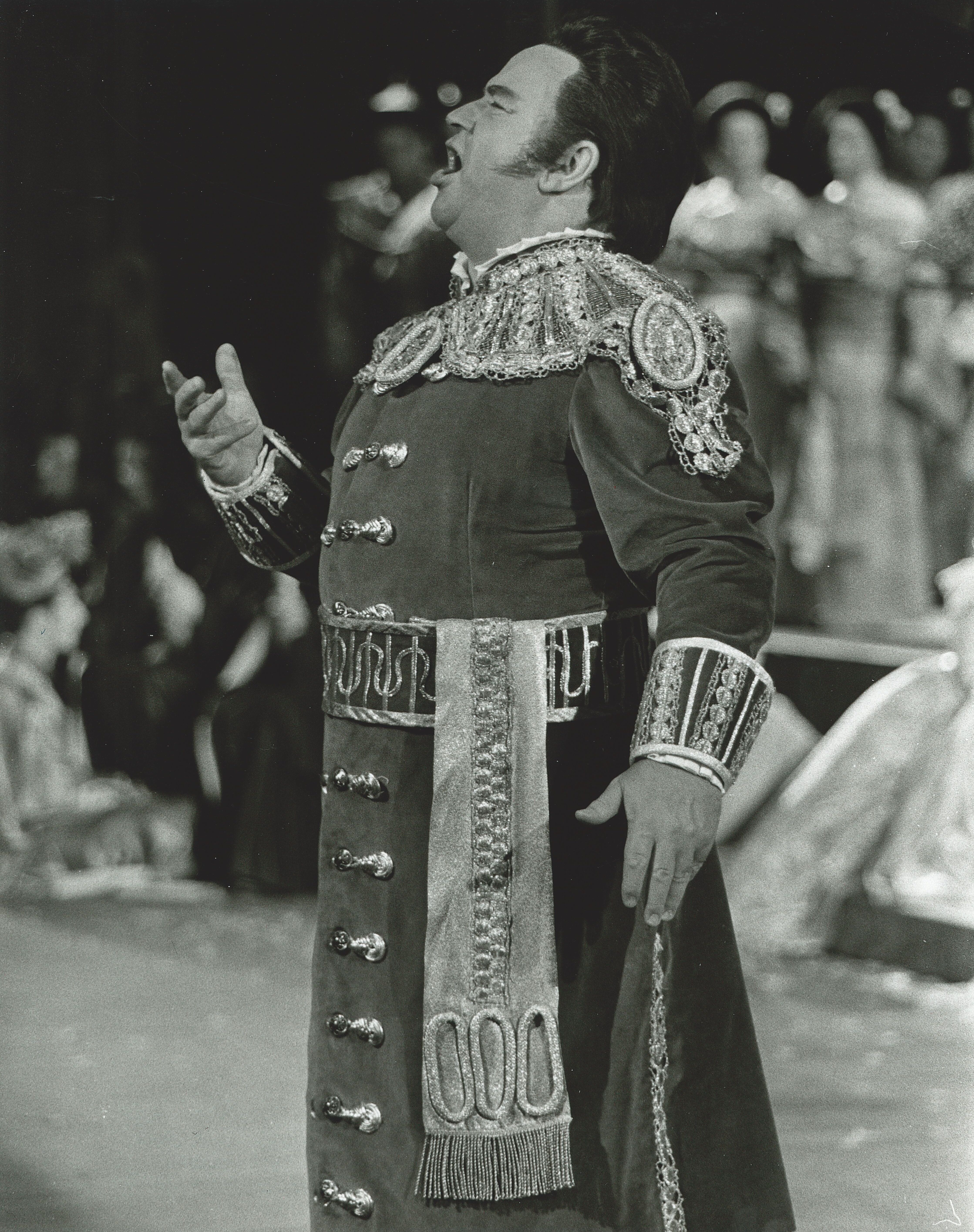
Puccini left behind only incomplete sketches of the finale when he died in 1924; when the opera premiered on April 25, 1926, conductor Arturo Toscanini fulfilled Puccini’s dying wishes by ending the evening where Puccini did, saying from the stage, “Here ends the opera, because the maestro died at this moment.” Puccini’s publisher, Ricordi, had already hired composer Franco Alfano to complete Puccini’s sketches, and the following performances were held in that “Alfano ending,” which is the standard one that you will hear in this production.
The Alfano ending, while the most common, is not the only finale to Turandot. (And, to be technical, there are two Alfano endings, after Ricordi required him to make drastic changes to his first attempt.) Many other composers have tried to decode Puccini’s sketches. In 2001, Puccini’s estate, along with the Casa Ricordi publishing house, commissioned another official ending to the opera, by Italian composer Luciano Berio. In 2008, the National Center for Performing Arts in Beijing commissioned Chinese composer Hao Weiya to write a new finale for the arts center’s inauguration, with the approval and input of the Puccini Foundation. I won’t include any sort of qualitative discussion on the merits of the various endings in this article; I highlight the different versions, essentially, to indicate that even in one of the most popular pieces in the operatic repertoire, we accept the artistic necessity, driven by a composer’s untimely death, of rearranging the musical score.
What of rearranging the score to bypass inauthentic representations? Innovative directors have found ways to produce Turandot that bypass yellow-face stereotypes of its operatic caricatures. In this production, the brilliant Robert Wilson applies his unique style of choreographed movement, sparse stage setting, and exceptional lighting techniques to transpose the opera to a fictional time and place—just as “real” as the commedia dell’arte China that Gozzi established in the tale’s evolution.
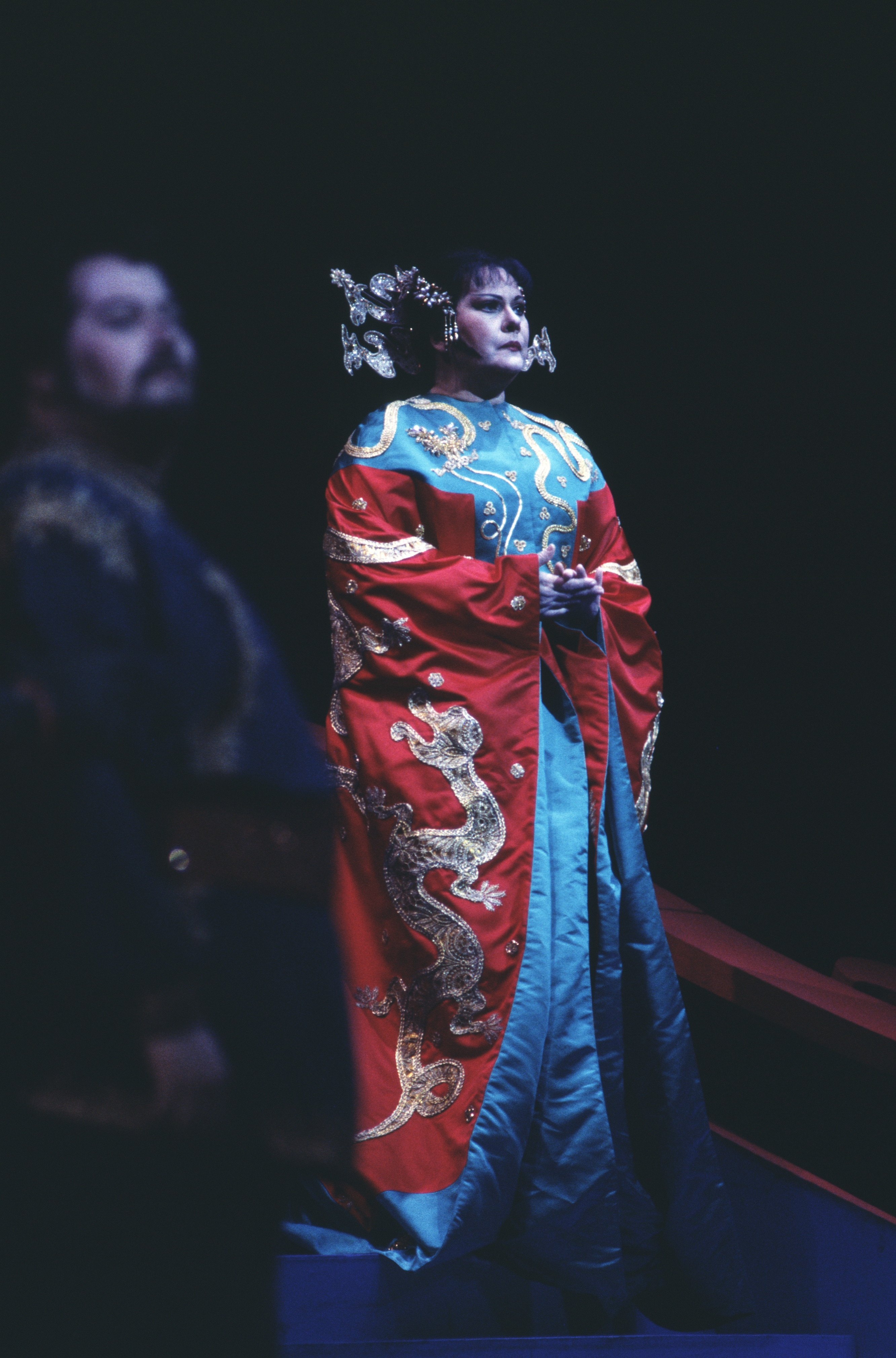
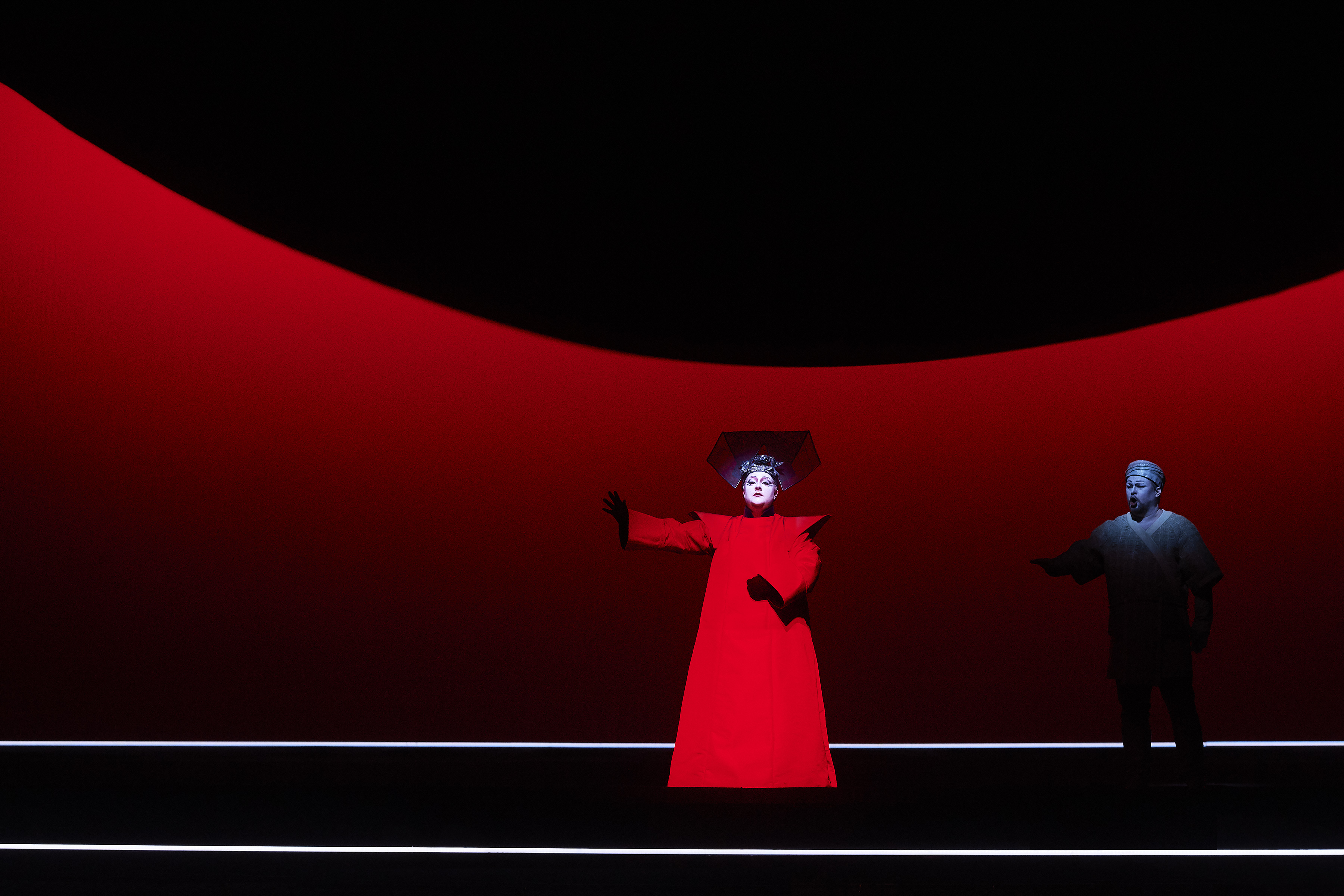
We have seen throughout this series of articles the ability of production interpretations and text alterations to endeavor to avoid inauthentic representations, and we’ve established that altering a composer’s original intent has been at least artistically valid—which we’ve discussed in the context of rearrangements of Turandot’s ending, of changing Monostatos’s text and physical appearance, and of cutting spoken dialogue in The Magic Flute. And if we accept that altering a composer’s original intent can be artistically valid, what if it were socially valid?
We as a community—a community of opera lovers, opera devotees, opera professionals, opera singers, casual operagoers, and total opera newbies—are in pretty solid agreement that the opera house is a place for feeling big feelings: the universal emotions of the human condition that wash over us in musical storytelling. If inauthentic representations in some operas prohibit people in our community—and, ideally, our constantly growing community—from connecting with that universality, should we not correct that? If the art is at the center of our communal experience, we can seek ways, shown to be artistically valid, that will bring us together for the universal emotions of the human condition—for all of us.